Advertisements
Advertisements
प्रश्न
A ray of light passing from air through an equilateral glass prism undergoes minimum deviation when the angle of incidence is 3/4 th of the angle of prism. Calculate the speed of light in the prism.
A ray of light incident on face AB of an equilateral glass prism, shows minimum deviation of 30°. Calculate the speed of light through the prism.
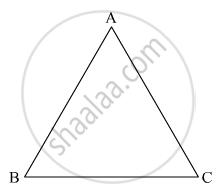
उत्तर
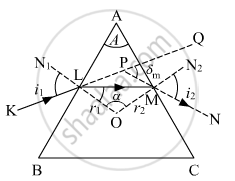
i = 3/4 A for minimum deviation we know,
A + δm = 2i
Therefore, A + δm = 2 × 3/4 A
δm = (1.5 − 1)A
⇒ δm = 0.5 A
For equilateral prism
A = 60° ...(i)
⇒ δm = 0.5 × 60° = 30° ...(ii)
Also, for minimum deviation, refractive index of glass w.r.t. air is given by
`∴μ="speed of light in air (c)"/"speed of light in prism"`...(iii)
`thereforemu=sin((A+δ_m)/2)/sin(A/2)`
`∴μ=sin((60+30)^@/2)/sin(60^@/2)`
`∴μ=sin((90^@)/2)/sin(60^@/2)` ....(iv)
using (iii) and (iv)
`∴"speed of light in prism"="speed of light in air (c)"/μ`
`∴"speed of light in prism" =sin(60^@/2)/sin(90^@/2) xx c`
`= (1/2)/(1/sqrt2)xx 3 × 10^8`
`= 3/sqrt2 × 10^8 "m/s"`
`= 2.12 × 10^8 "m/s"`
APPEARS IN
संबंधित प्रश्न
How does the angle of minimum deviation of a glass prism vary, if the incident violet light is replaced by red light? Give reason.
Write the relationship between angle of incidence ‘i’, angle of prism ‘A’ and angle of minimum deviations for a triangular prism.
Trace the path of the ray (P) of light passing through the glass prism as shown in the figure. The prism is made of glass with critical angle ic = 41°.
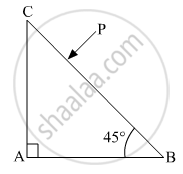
Three light rays red (R), green (G) and blue (B) are incident on a right angled prism ‘abc’ at face ‘ab’. The refractive indices of the material of the prism for red, green and blue wavelengths are 1.39, 1.44 and 1.47 respectively. Out of the three which colour ray will emerge out of face ‘ac’? Justify your answer. Trace the path of these rays after passing through face ‘ab’.
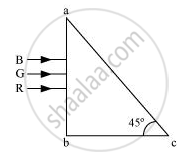
If a piece of paper is placed at the position of a virtual image of a strong light source, will the paper burn after sufficient time? What happens if the image is real? What happens if the image is real but the source is virtual?
A flint glass prism and a crown glass prism are to be combined in such a way that the deviation of the mean ray is zero. The refractive index of flint and crown glasses for the mean ray are 1.620 and 1.518 respectively. If the refracting angle of the flint prism is 6.0°, what would be the refracting angle of the crown prism?
A small object is embedded in a glass sphere (μ = 1.5) of radius 5.0 cm at a distance 1.5 cm left to the centre. Locate the image of the object as seen by an observer standing (a) to the left of the sphere and (b) to the right of the sphere.
A ray PQ is incident normally on the face AB of a triangular prism of refracting angle 60° as shown in figure. The prism is made of a transparent material of refractive index `2/sqrt(3)`. Trace the path of the ray as it passes through the prism. Calculate the angle of emergence and the angle of deviation.
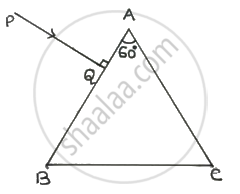
A ray of light when incident upon a thin prism suffers a minimum deviation of 39°. If the shaded half portion of the prism is removed, then the same ray will ______.
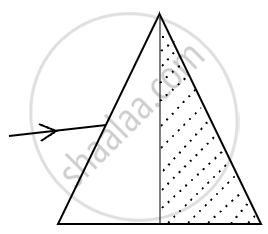
A ray of monochromatic light passes through an equilateral glass prism in such a way that the angle of incidence is equal to the angle of emergence and each of these angles is 3/4 times the angle of the prism. Determine the angle of deviation and the refractive index of the glass prism.
